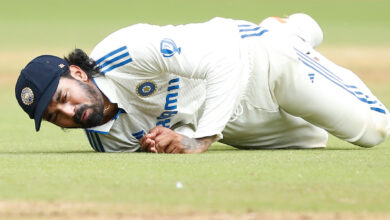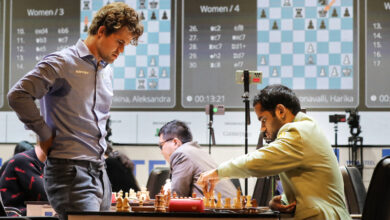Why Indian bowling unit can potentially derail the ODI world cup campaign

With seven months left for the ODI world cup, two of which would be consumed the IPL, the three ODIs coming up against Australia arrives at a crucial juncture for India. Having already kick-started their preparations for the big ticket event with series against Sri Lanka and New Zealand, India know exactly where they are. The upcoming three ODIs against Australia is another opportunity for Rohit Sharma & Co to come up with a blueprint that they can take to the World Cup in October-November. India are already going about it in a certain way, but it is also pertinent to look at the successful blueprint of the 2011 World Cup winning side, the last time India played the World Cup on home turf.
For the time being let’s keep the batting unit aside because their aggressive approach is yielding them the desired results. But is there something that MS Dhoni’s 2011 triumphant World Cup team had that the current lot is missing? The bowling. And incidentally their bowling can also have a spill-over effect on their batting.
The 2011 team had Zaheer Khan, Ashish Nehra, Munaf Patel – three seamers who were at their peak and intimately knew their roles. Harbhajan Singh was their main spinner, with Yuvraj Singh sharing the main burden of the fifth bowler (with 15 wickets, he was the second-highest wicket taker of India), and the likes of S Sreesanth, R Ashwin, Yusuf Pathan, Piyush Chawla were rotated depending on the opposition and conditions.
The current Indian team, in contrast, has Mohammad Shami, Mohammad Siraj, Umran Malik as their first-choice seamers. With Jasprit Bumrah availability not clear, it is understood that India are preparing for the worst and a decision on his inclusion is expected to stretch till the last few days of the World Cup.
🗣️🗣️ ‘Their intensity in practice rubs onto the youngsters’ 💪
Ahead of the #INDvAUS ODI series opener, Fielding Coach T. Dilip explains how @imVkohli & @imjadeja have been role models in the field for the youngsters 👏👏#TeamIndia | @mastercardindia pic.twitter.com/4NourJOfR7
— BCCI (@BCCI) March 15, 2023
In Bumrah’s absence, these three seamers are proficient no doubt, but things have to fall in place — read they have to have their best days consently — for them to click as a unit. All three, as they have shown in the IPL, can leak runs, and can be taken apart in the end overs. Moreover, the trio’s workload also has to be closely monitored right through the IPL as Shami had already raised a red-flag during the Test series. Same with Siraj, who was rested for the last Test.
In 2011, Munaf Patel took care of the middle-overs, Zaheer with the new ball and the end, with Nehra pretty effective at the death. Shami and Siraj are good with the new ball but there is no guarantee that they will strike, and more importantly, they have to find their game and hit the right notes in the middle and end overs in Indian conditions. They have time to practice and perfect it and that’s where planning and trust will come into the picture.
In the spin department, as of now India have Kuldeep Yadav and Yuzvendra Chahal as frontline candidates. However, both their inclusion in the XI will depend on the balance of the team. The duo are the best bets for India to operate in the middle overs alongside a pacer like Umran.
The second powerplay (11-40 overs) has become a target spot for batting teams. With only four fielders allowed outside the ring and the presence of two new balls means there is not much help for spinners, batting teams are no longer content going at 4-5 RPO in the middle-overs. More than the first powerplay, the second has become the one that sets the tone for the last 10 overs. With 5 fielders allowed outside the circle in the last 10 overs, bowling teams have found a way to comeback, provided they can take wickets in the second powerplay.
India’s Jaydev Unadkat, left, with Umran Malik warm up for a practice session ahead of the first one day international cricket match against Australia, in Mumbai, India, Wednesday, March 15, 2023. (AP Photo/Rafiq Maqbool)
In the exing field-restriction rules, India would hope that Hardik Pandya does the batting-allrounder job for them as well as Yuvraj did. Pandya holds the key for the team’s balance, but no one can say for sure, at this juncture, how his bowling will hold up under pressure.
With their best death bowler doubtful for the World Cup, the options are limited for India. Arshdeep Singh showed promise during the last IPL to earn a call-up to the T20 World Cup, but the left-arm seamer is still a work in progress and is not part of the ODI plans as yet. The other options for India are Shardul Thakur and Deepak Chahar — two contrasting seamers, who the team management is closely watching, for they can lend something the others don’t — contribute with the bat.
While an attack comprising Shami, Siraj, Umran/Arshdeep, Kuldeep, Chahal does look strong on paper, it will leave the team having a long tail. With their old-school approach — to keep wickets in hand and switch gears in the last 10 overs — this may have worked, but that method is well past its sell- date. And if they go ahead with that bowling line-up with their more aggressive approach with the bat, it could cost them in the end.
Which is why there is interest in Chahar and Thakur. The latter, especially, has shown promise and is being seen as the one to bridge the gap between the lower-order and the tail. The only factor that is going against him is his economy rate which is over 6 and his natural back of a length usually lands in the ideal slot for batsmen to tee-off. During the recent ODIs against New Zealand, he went for runs, but at the same time, found a way to get wickets.
With regards to Chahar, his ability to move the ball both ways means he can be counted on to give breakthroughs with the new ball. Moreover, he is solid with the bat. Seen as an ideal replacement for out of favour Bhuvneshwar Kumar, Chahar fitness issues have put him down the pecking order.
And even if all these pieces make for a perfect art, India will have to compromise on team balance, which is essential. To find that balance, India needs Hardik Pandya and one of Ravindra Jadeja/Washington Sundar/Axar Patel in the XI, but if that happens, they will be forced to leave one of their wicket-taking options (Chahal or Kuldeep) on the bench. doing this, they would be able to extend the batting depth till No 8 and at the same time have more than five bowling options, which is a non-negotiable element.
In the coming months, this headache has all the potential to turn into a migraine.







